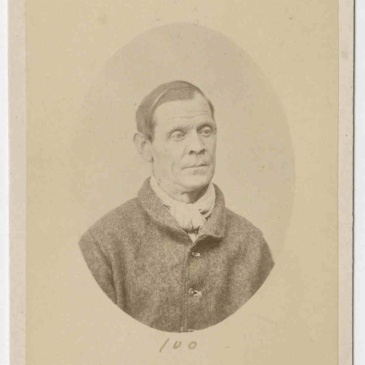The three identical mugshots featured here are duplicates mounted in carte-de-visite format produced on government contract by commercial photographer Thomas J. Nevin from his single negative, taken at a single sitting with prisoner Alfred Malden or Maldon either on Malden’s transfer from the Port Arthur prison, 60 kms south of Hobart to the Hobart House of Corrections, Campbell St. between July 1873 and January 1874, or on his discharge from the Mayor’s Court, Hobart Town Hall, in February 1874. Thomas J. Nevin produced and printed many hundreds of these studio cartes-de-visite prisoner identification photographs in oval mounts – with six or so duplicates – for police use in Hobart from the early 1870s. In a nutshell, recent arrivals from Melbourne, American seamen Maldon and Wilson were operating a pickpocket scam outside a theatre in Launceston when Wilson was caught by police. His fellow countryman Alfred Maldon confronted them, demanding they let Wilson go, then shot one of the constables called Eddie in the face. In the course of the long report of 29 April, 1871, the spelling of the shooter’s name changes from Maldon to Malden. The “American-ness” of the crime – shooting at police – was noted as “rare in British communities”. Alfred Maldon was tried at the Supreme Court, Launceston on 1st June 1871, sentenced to ten years, and discharged from Hobart Town in the week ending 25 February 1874, less than three years later on condition he leave the colony. His excuse for the shooting was that he was drunk, and because of a previous head injury caused by being struck by lightning, he was incapable of knowing what he was doing, a claim which amounted to a not-guilty plea, according to the trial judge. … More Prisoner Alfred MALDON or MALDEN 1874










































You must be logged in to post a comment.